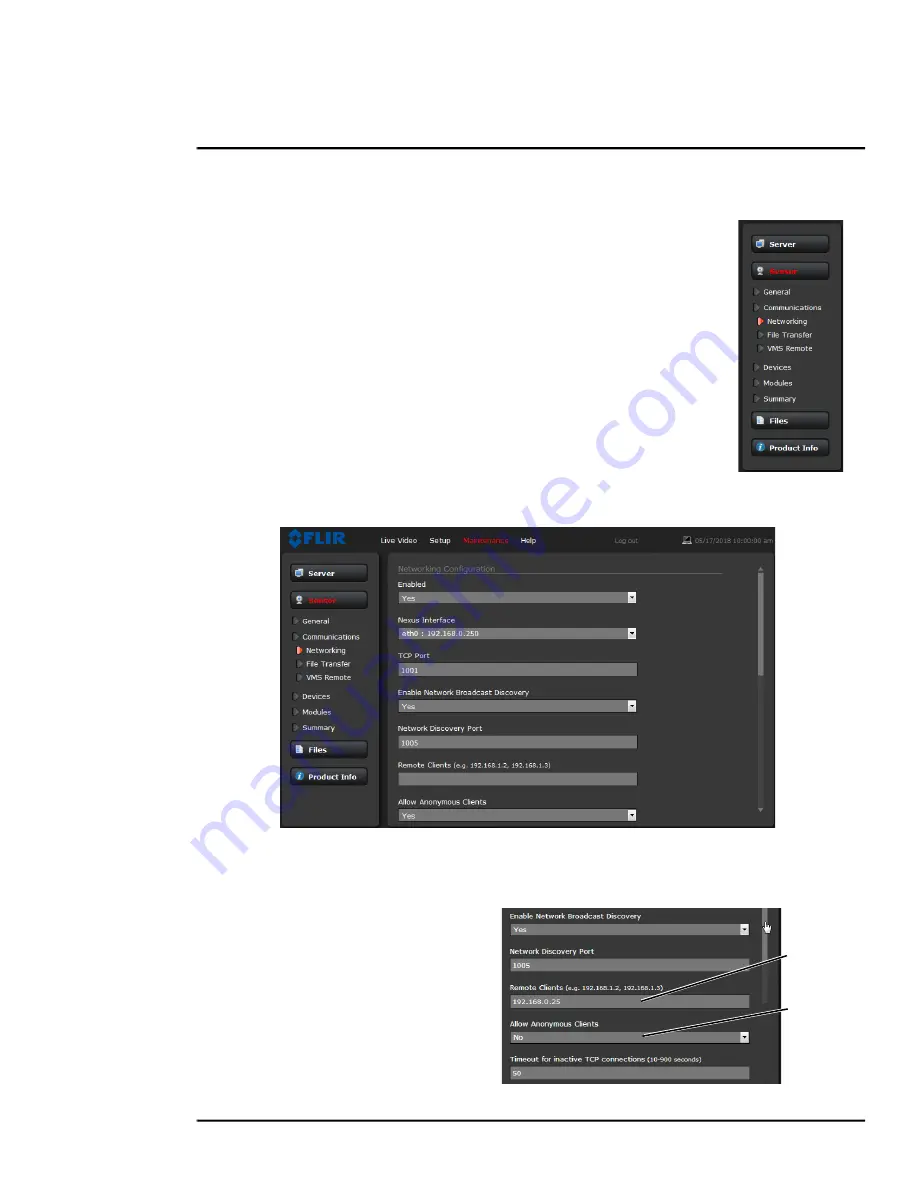
427-0033-00-12 Version 110
February 2019
44
This document does not contain any export-controlled information.
Advanced Configuration
3.2.1
Sensor Menu
The configuration changes commonly used are done through the Sensor
menu. Described below are configuration steps from the
Communications
,
Modules
, and
Summary
selections.
Communications Menu
The primary IP configuration parameters, such as IP address, network mask,
and gateway, are configured with the LAN Settings page (refer to
). The Networking page can be used to configure some of the other IP
networking parameters.
Networking Page:
Generally it is assumed the camera network will be
secured through recognized network security measures and best practices,
such as limited physical access, firewalls, and so on. As an additional security
consideration, it is possible to restrict access to the camera by remote clients
by setting the “Allow Anonymous Clients” to No, and then enter IP addresses
for the clients that are allowed access in the Remote Clients parameter.
The default TCP port for most FLIR IP cameras is 1001. This is the port number that a client program
such as FLIR Latitude can use to communicate with the camera. If using an ONVIF-compliant VMS
as a client, refer to VMS Remote, below.
If the Enable Network Broadcast Discovery
parameter is set to Yes, the camera sends
out a “discovery” packet on the network
every half second as an Ethernet broadcast.
To restrict client programs to allowed IP
addresses, enter allowed IP addresses in
the Remote Clients list, then set the Allow
anonymous clients parameter to No, and
click
Save
. The changes will not take effect
until the server is stopped and started.
Set
Enter IP
Addresses
to No
pulldown






























